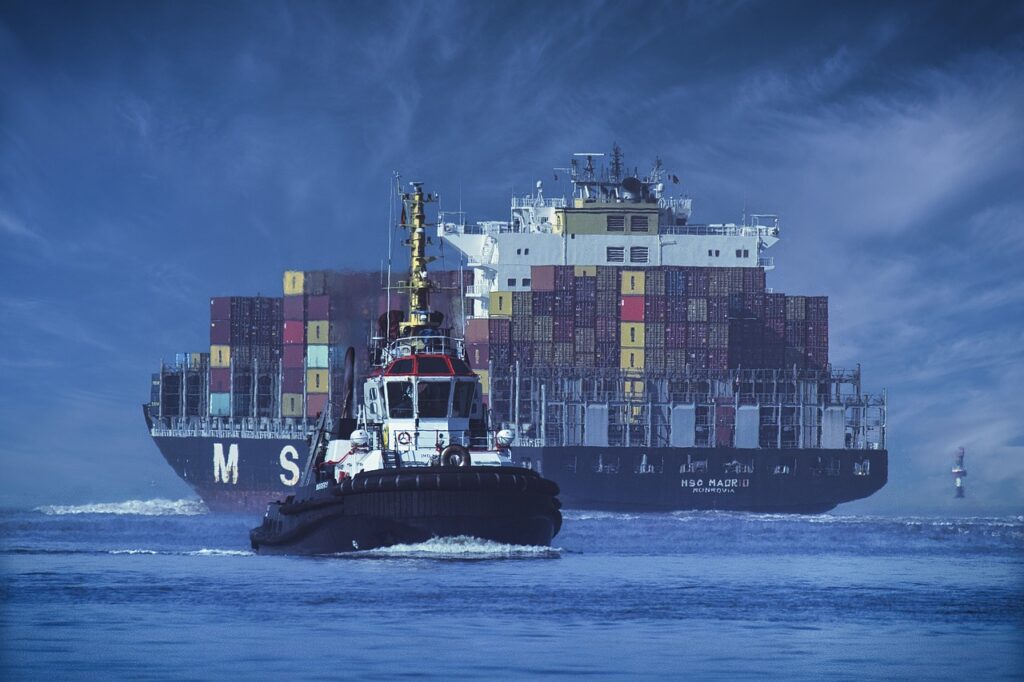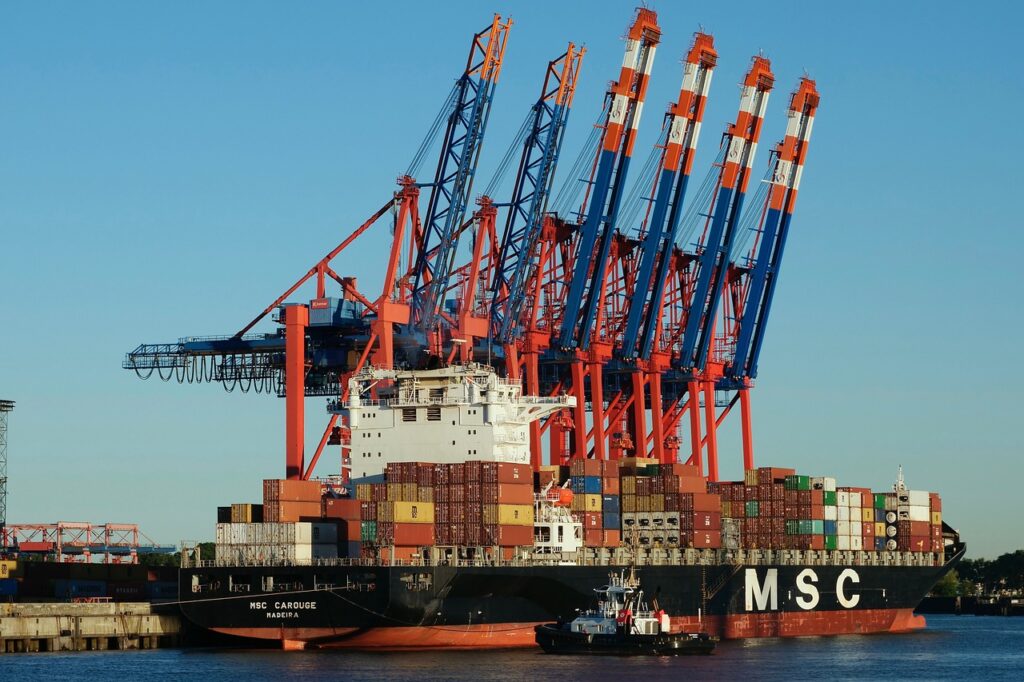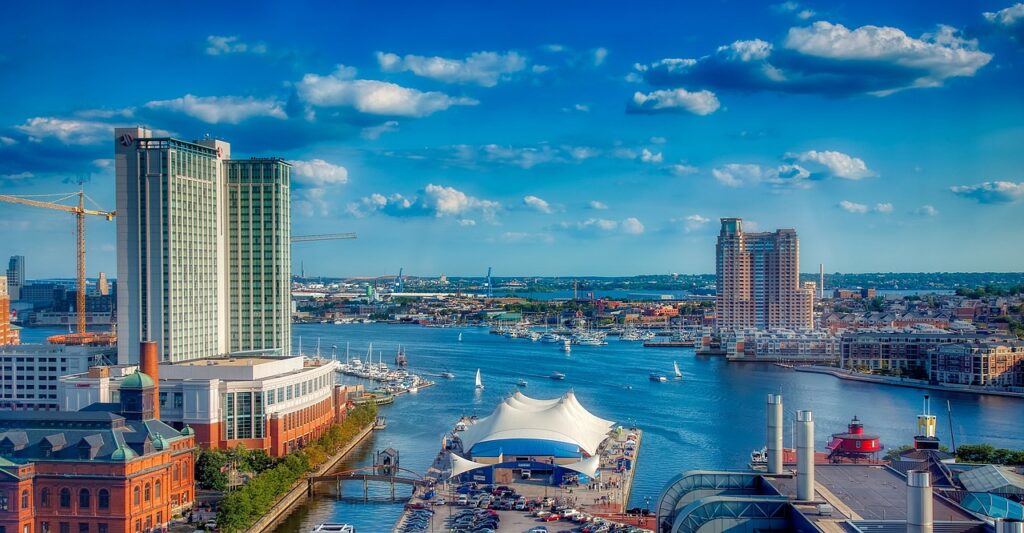On March 26, 2024, the MV Dali, a Singapore-flagged cargo ship, veered off course and collided with the Francis Scott Key Bridge in Baltimore, Maryland. After the ship lost power, it drifted uncontrollably into a support tower. This collision caused a catastrophic collapse, sending 4,000 tons of debris plunging into the Patapsco River. Six construction workers lost their lives, raising serious questions about global shipping regulations.
Just recently, on September 25, 2024, the state of Maryland announced that it plans to sue the owners and managers of the MV Dali. Maryland’s Governor and Lieutenant Governor see plenty of grounds for the lawsuit.
The lawsuit attests that the MV Dali suffered two electrical failures just before the crash, causing it to lose both propulsion and steering. Despite similar issues the day before, Grace Ocean Private Limited, the ship’s owners, and its managers, Synergy Marine Pte Ltd., failed to address the problems adequately.
Investigations revealed that the crew bypassed safety systems and lacked proper training to manage emergencies like this, directly contributing to the disaster. As a result, the destruction of the bridge has blocked access to the Port of Baltimore for nearly two months, worsened traffic congestion, and caused environmental pollution—disproportionately affecting vulnerable communities.
Read on for background that will help you better understand the significance of this decision to sue.
The Facts of the Case
As the previously linked safety4sea article outlines, there were many issues with the operation and condition of the MV Dali in the days before its collision with the FSK bridge. The MV Dali was built by South Korea’s Hyundai Heavy Industries in 2014. It was chartered by Danish shipping giant Maersk for a planned trip from Baltimore to Sri Lanka. However, the Dali never made it out of the harbor. The ship, owned by Grace Ocean Private Ltd. and flying a Singaporean flag, was powered by diesel engines. Its crew primarily came from countries with less stringent maritime training standards.
The crew’s lack of experience in handling critical situations, such as power loss, contributed significantly to the disaster. Maintenance records revealed long intervals between safety checks and repairs, a common issue among ships registered under Flags of Convenience (FOC). Although Singapore is not officially an FOC nation, the conditions on the MV Dali were similar to those of vessels from FOC countries.
Relevant Details
Flagging a ship under the banner of an FOC country is similar to incorporating a company in a tax haven. It gives the ship’s owners access to favorable tax rates, certification approvals, and preferential security measures from the state of registration. “Flag of convenience” (FOC) describes this practice, which is widespread in the shipping industry.
There is some debate about whether the MV Dali qualifies as an official FOC ship. The Singaporean flag generally signifies a higher standard of regulation compared to FOC nations. The Singaporean Port Authority has denied being an FOC nation. However, the ship’s operational conditions suggest otherwise.
TAP journalist Robert Kuttner succinctly captured the gravity of this issue, stating, “Like much of global shipping, the MV Dali, which took down the Key Bridge, is a flag-of-convenience ship, with fractured responsibility for its conditions.” He explained that the ship was “chartered by the Danish shipping giant Maersk, operated by Synergy Marine Group, and registered in Singapore,” with a crew of 22 foreign workers from India. The ownership, chartering, and operation of the MV Dali were divided among multiple entities, each based in different countries, creating a complex web of hard-to-trace accountability issues.
The Flag of Convenience (FOC) System
The Flag of Convenience (FOC) system allows shipowners to register their vessels in countries with lenient regulatory environments, avoiding stricter regulations in their home countries. Panama, Liberia, and the Marshall Islands are the most notorious FOC nations, together accounting for 44.3 percent of the world’s cargo capacity in 2022, according to Statista. This practice allows shipping companies to benefit from reduced oversight, lower taxes, and relaxed labor laws.
Why Register Under FOC?
For many shipping companies, the decision to register under an FOC is purely financial. FOC countries offer significant cost savings by imposing lower taxes and fees, as well as less stringent safety and environmental regulations. This financial advantage is further enhanced by the ability to hire cheaper, non-unionized labor from developing countries, reducing operational costs even further.
Upsides of Registering as FOC
The benefits of FOC registration are primarily economic. By registering in FOC countries, shipowners can avoid the higher costs associated with stricter regulatory environments. This allows companies to operate more profitably, even in a highly competitive industry where margins are thin. The flexibility in labor practices provided by FOC registration also allows companies to hire less expensive crews, further driving down costs.
Downsides of the FOC System
However, the cost savings associated with FOC registration come with significant risks. The lack of regulatory oversight often leads to serious safety and environmental concerns. David Heindel, president of the Seafarers International Union, criticized the FOC system for allowing shipowners to “basically regulate themselves,” resulting in inadequate maintenance, poorly trained crews, and a general disregard for safety standards.
Environmental damage is another major issue associated with FOC vessels. Ships registered under these flags are notorious for their lax adherence to international environmental standards, often leading to catastrophic incidents such as oil spills. The lack of accountability in FOC nations means that these incidents are rarely investigated thoroughly, and those responsible are seldom held accountable.
Relevance to the Francis Scott Key Bridge Collapse
The collapse of the Francis Scott Key Bridge serves as a stark reminder of the dangers posed by the FOC system. While the MV Dali was not technically an FOC vessel, its operation bore many similarities to those that are. The ship’s maintenance records showed extended intervals between safety checks, and the crew’s lack of experience in handling critical situations like power loss was a significant factor in the disaster.
Rebuilding the bridge is expected to take three to five years, with costs potentially reaching up to $500 million. The immediate financial impact is significant for Maryland businesses. Companies that rely on the Port of Baltimore face substantial disruptions. Shipping costs are likely to rise by 15-20% due to increased detours and longer transport routes.
Retailers and wholesalers in Maryland alone could see losses in the range of $50 million to $100 million as supply chains are rerouted and delays mount. Additionally, increased congestion will lead to higher operational costs for local businesses, including longer commute times and delivery delays. It’s estimated that 60% of all firms in Maryland are feeling some level of economic impact from the collapse of the bridge, which serves as a major artery to and from the Baltimore area.
Impact Beyond Maryland’s Economy
The impact is also considerable for U.S. businesses outside Maryland. Companies that depend on the Port of Baltimore to import and export goods will encounter increased freight expenses and logistical headaches. For instance, a North Carolina poultry farm that exports through Baltimore might incur an extra $2 million in shipping costs as it redirects goods to other ports like Norfolk. Similarly, a Virginia furniture retailer could face up to $3 million in additional costs due to delays and congestion.
Internationally, businesses that trade through Baltimore will also feel the sting. Companies across Europe and Asia that import or export goods via the Port of Baltimore could face delays and increased shipping costs, estimated to be in the tens of millions of dollars. These delays could disrupt global supply chains and drive up costs for goods and materials worldwide.
While some shipping companies save on upfront costs by skimping on safety, the financial fallout from disasters far exceeds those savings. Investing in disaster response and proper training is essential to avoid expensive and devastating failures.
Other FOC Disasters
The MV Dali disaster is not an isolated incident. It is part of a broader pattern of accidents involving FOC-registered vessels. One notable example is the sinking of the MV Erika in 1999, a Maltese-registered oil tanker. The spill caused a massive environmental disaster off the coast of France. Investigators blamed poor maintenance and substandard conditions aboard the ship—issues common with FOC vessels.
Similarly, the MV Prestige, a Bahamian-flagged oil tanker, sank off Spain’s coast in 2002. This led to one of Europe’s worst environmental disasters. The investigation revealed significant structural deficiencies, unnoticed due to inadequate inspections—a hallmark of the FOC system. These incidents highlight the persistent risks with FOC registrations, where profit outweighs safety, environmental protection, and maritime workers’ rights.
A retired maritime lawyer recalled another example from the 1970s in Indonesia. Ships flying Liberian and Panamanian flags collided in the Palembang channel, causing significant environmental damage. Like the MV Dali case, these ships were insured under UK-based policies. These means liability rests primarily on the insurers, not the flag states. The MV Dali disaster is expected to trigger extensive insurance claims. Claims like these cover the cost of the removal and rebuilding of the bridge, compensation for the loss of life, and disruptions to global shipping.
The Industry’s Workarounds and Compliance Loopholes
FOC registrations are just one of the many compliance workarounds that the shipping industry employs to reduce costs. These loopholes often compromise safety, labor rights, and environmental standards, making the industry even more susceptible to disasters.
In addition to FOC registrations, shipowners often use “open registries,” registering vessels in countries where they have no actual operations. Another common workaround is “dual registration”. Approaches like this allow ships to be registered under two different flags simultaneously to reap the benefits of both. These practices further complicate the already fragmented regulatory landscape of the shipping industry. As a result, it becomes much harder to hold shipowners accountable for their vessels’ operations.
Conclusion
As TAP journalist Robert Kuttner described, the MV Dali’s operation was characterized by “fractured responsibility for its conditions.” This sentiment reflects much of the global shipping industry today. The tragic collapse of the Francis Scott Key Bridge is just one example of the devastating consequences that can result from widespread compliance issues. It’s time for change—before another disaster strikes. The FOC system provides undeniable cost benefits for shipowners. That said, it undeniably does so at the expense of safety, environmental protection, and labor rights.
The MV Dali incident should be a wake-up call. This preventable tragedy highlights the critical need for stricter international regulations and better enforcement to ensure that all ships, regardless of their flag, adhere to high safety and operational standards. Every coastal state and nation, like Maryland with the FSK bridge, depends on bridges and similar infrastructure. They should take heed before more lives are lost.


